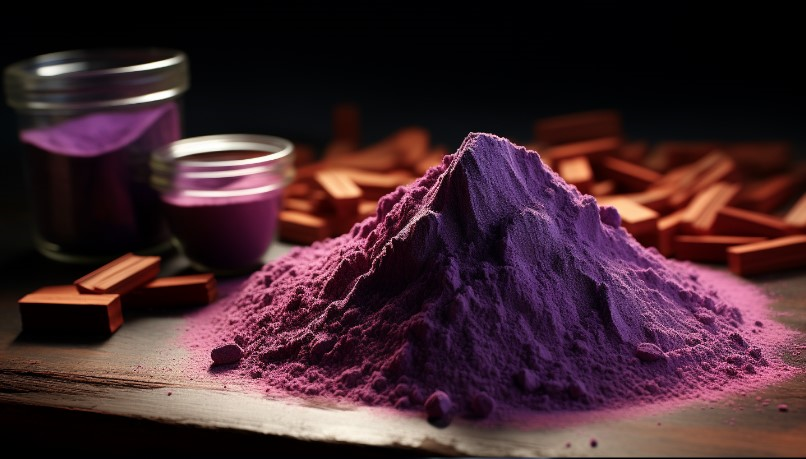Proanthocyanidine und Gesundheit

Proanthocyanidins (PC) are homologous or allogenic polyphenolic flavonoid compounds that are polymerized by different amounts of catechins, epicatechins or gallic acids. They are widely distributed in plant foods, especially in fruits such as grapes and cranberries.
Proanthocyanidins have more impact on the health of middle-aged and older women, and many clinical trials and cohort studies have shown that proanthocyanidins help prevent cardiovascular disease, hypertension, obesity, cancer, osteoporosis and urinary tract infections, as well as improve menopause symptoms, kidney function and skin damage.
Die Beziehung zur Gesundheit
1. Antioxidant
Proanthocyanidins are currently recognized as one of the most effective natural antioxidants for scavenging free radicals in the body. They are effective scavengers of reactive oxygen species (ROS), especially for inhibiting lipid peroxidation. Proanthocyanidins also reduce the loss of other antioxidant nutrients, thereby reducing the formation of oxidative products, thereby increasing the total antioxidant capacity of the whole body.
2. Prevention of cardiovascular disease
Proanthocyanidins have the functions of protecting blood vessels, anti-atherosclerosis, anti-inflammation, anti-oxidation, scavenging oxygen free radicals, anti-platelet agglutination, lipid-lowering and blood pressure, etc. They can regulate cardiovascular diseases through various mechanisms, so as to reduce the incidence of cardiovascular diseases.
Multiple large-scale prospective cohort studies have found that the higher the intake of proanthocyanidins, the lower the risk of cardiovascular death. In a randomized, double-blind placebo-controlled trial, healthy subjects (21 to 51 years old) were given a daily proanthocyanidin diet (approximately 213mg) for 2 consecutive weeks, and the vascular endothelial function of the subjects was significantly improved.
3. Anti-tumor effect
Studies have confirmed that proanthocyanidins have different degrees of inhibition on a variety of tumor cells (such as breast cancer, prostate cancer, skin cancer cells, etc.). At the same time, proanthocyanidins can improve the growth and survival ability of normal gastric mucosa cells and normal urethral epithelial cells.
The anti-tumor mechanism may be related to regulating mitosis, blocking cell cycle, inhibiting cell growth and inducing cell apoptosis.
Huynh et al. suggested that proanthocyanidins could selectively induce apoptosis of human breast cancer cells. Proanthocyanidins (10-100g /L) significantly inhibited the growth of DU145 cells, showing a dose-time-effect relationship, and blocked the cell cycle in G1 phase.
4. Other functions
Proanthocyanidins can also significantly reduce the incidence of urinary tract infections, especially in women with recurrent urinary tract infections, and the effect of crancrane-derived products is more obvious in women with recurrent urinary tract infections.
Proanthocyanidins can fight against skin aging, and Dr. Astila of Finland proved in experiments that about 85% of cells were prevented from dying after being protected with proanthocyanidins, thereby delaying or reducing the appearance of wrinkles.
Dosierungsanleitung
At present, a number of studies have shown that if the daily intake of about 200mg of proanthocyanidins, may have a role in reducing the risk of cardiovascular disease, but the extracts used in clinical trials are diverse, and the healthy dose relationship of pure proanthocyanidins is uncertain.
At present, oral proanthocyanidins or rich food extracts have not been seen to have adverse effects on humans and animals, but China has formulated UL, which is 800mg/d.
Hauptnahrungsquelle
Proanthocyanidins are widely distributed in plant foods, mainly in grapes, sorghum, apples, beans such as cocoa beans and wild fruits (such as rosehips, cherries, raspberries, blackberries, cranberries and strawberries) and other plants, of which grapes are the most abundant and important food source, especially in grape seeds.
Referenzmaterialien:
[1] Chinese Nutrition Society. Reference intake of dietary nutrients for Chinese residents. Beijing: Science Press, 2014. [2]Mccullough, M. L. , et al. “Flavonoid intake and cardiovascular disease mortality in a prospective cohort of US adults.” American Journal of Clinical Nutrition 95.2(2012):454-464.[3]Hong, H. U., and YM Qin. “Grape seed proanthocyanidin extract induced mitochondria-associated apoptosis in human acute myeloid leukaemia 14.3D10 cells.” Chinese Medical Journal 119.5(2006):p.417-421.[4]Huynh H T, Teel R W . Selective induction of apoptosis in human mammary cancer cells (MCF-7) by pycnogenol[J]. Anticancer Research, 2000, 20(4):2417.[5]Izumi T, Terauchi M. The Diverse Efficacy of Food-Derived Proanthocyanidins for Middle-Aged and Elderly Women. Nutrients. 2020 Dec 15; 12(12):3833. doi: 10.3390/ nu12123833.PMID: 33334009; PMCID: PMC7765374.
Proanthocyanidins supplier: www.backvita.com
E-Mail: [email protected]
Telefon: +86 (029) 8187 2325
